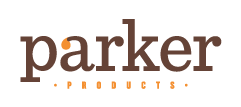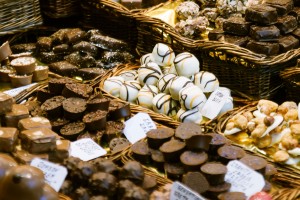2016 Trends in Specialty Coffee
Specialty coffee is good business these days. The high end coffee scene, characterized by an emphasis on quality, provenance, and flavor—as well as innovative preparation methods and steep prices—has reached an unprecedented level of prominence in the American marketplace. New shops are constantly arriving on the scene, new brewing devices have launched as with successful Kickstarter campaigns, and consumers can now pick from a dozen or more specialty coffee subscription services.
Although much of the trend is driven by independent shops and roasters, specialty coffee has grown to the point that major brands are taking note: Starbucks launched its Reserve Roastery and Tasting Room in late 2014 to compete in the segment, and more recently, the most prominent specialty coffee chains have received significant and high profile investments and acquisition offers. All of this growth suggests that even coffee brands with a more accessible, affordable style need to look to these high-end players for ideas and inspiration.
Along with growth in the industry has come an explosion in flavors, textures, and preparation methods for specialty drinks. Although many specialty shops place a heavy emphasis on single-origin coffees, served black, drinks featuring more indulgent or culinary ingredients contribute to some of the most significant trends.
As these drinks grow in popularity, consumers will come to expect them even at shops without a specialty profile—as illustrated by the Starbucks Reserve Roastery and the increasing number of single-origin and specialty roasts offered by that brand.
The following three trends represent some of the most important areas of future development in specialty coffee. Our team of culinary trendwatchers believes that each of these trends will have a prominent place in the future of the beverage industry—both in specialty coffee itself, and in other brands that look to specialty coffee as a model.
1. Cold brew everywhere
Maybe the most successful product, by sheer volume, to emerge from the specialty coffee scene is cold brew coffee. The cold brew preparation makes coffee smoother and gives it strong chocolate notes, making it highly accessible even to those who aren’t devotees of expensive single-origin brews. And cold brew is also remarkably versatile, suitable for use as an iced coffee, as well as hot or mixed with other ingredients for cooking or more complex beverages.
Cold brew has been a trend for a couple of years now, but the new frontier for the trend will be its emergence in practically every corner of the market. As more brands produce ready to drink cold brew coffee, cold brew will begin showing up everywhere from board rooms—many specialty shops already offer daily cold brew service in a tapped keg—to gas stations.
Cold brew is now available in wine bottles, wine boxes, Tetra Paks, aluminum cans, glass bottles, and an unusual bubble-envelope package. Entire businesses are based around cold brew, and many of the largest specialty coffee brands made their name on it. In 2016, we predict a major beverage brand will move into the cold brew arena and the worldwide dominance of this brew method will truly begin.
2. Nitro coffee
Nitro coffee is a development of the cold brew trend that is increasingly popular in both cafes and as a ready-to-drink product from various brands. In this preparation, coffee is nitrogenized via the same process used for Guinness beer. Nitro coffee can be produced using a nitrogenized beer tap, or it can be canned. The resulting beverage is creamy and smooth, with an outstanding mouthfeel from the microfoam created by the nitrogen.
The ready availability of nitrogenizing technology and the indulgent qualities of the drink make it a popular choice for shops looking to add a consumer-friendly specialty drink. The specialty chain La Colombe recently debuted a “draft latte” made with nitrogen, which they claim offers the only way to replicate the silky texture of a latte in a cold beverage.
In 2016, we expect nitro coffee to show up at several larger chains as an exciting LTO, with the potential to make its way onto the regular menu in the future. (Shortly after this post was written, Caribou Coffee announced a nitro test run, so consider our prediction well on its way!) We also expect to see more specialty cafes experimenting with flavored nitro lattes—perhaps rimmed with a flavored sugar or infused with on-trend flavor bases like maple, mint, or lime.
3. Coffee mocktails and cocktails
Although specialty shops are known for their focus on single-origin coffees, many also boast a rotating menu of specialty beverages that draw from the techniques and ingredient lists of craft cocktails—whether they include alcohol or not. From coffee tonics (coffee and tonic water) to espresso-based “mint juleps,” many draw on classic cocktails, while others live in the more traditional flavored latte family, adding ingredients like lavendar or anise to milk-based drinks.
We expect these drinks to increase in variety and accessibility, with more chains adding both non-alcoholic and spiked options to their menus. In the spirit of supporting the industry, here are three ideas for specialty coffee drinks we haven’t seen before (all made with Parker ingredients, of course):
- Cherry pecan latte made with butter pecan flavor base, whipped cream, and our cherry candy topping
- The fruit bomb: a fruity African espresso blended with hibiscus tea and mango flavor, and topped with our lemon candy flakes
- Maple tiramisu affogato: maple-flavored ice cream topped with a blend of amaretto flavor and espresso
Interested in commercializing any of these product concepts and drawing on the success of the specialty coffee trend? Get in touch today and our R&D staff can help meet your product formulation needs.


